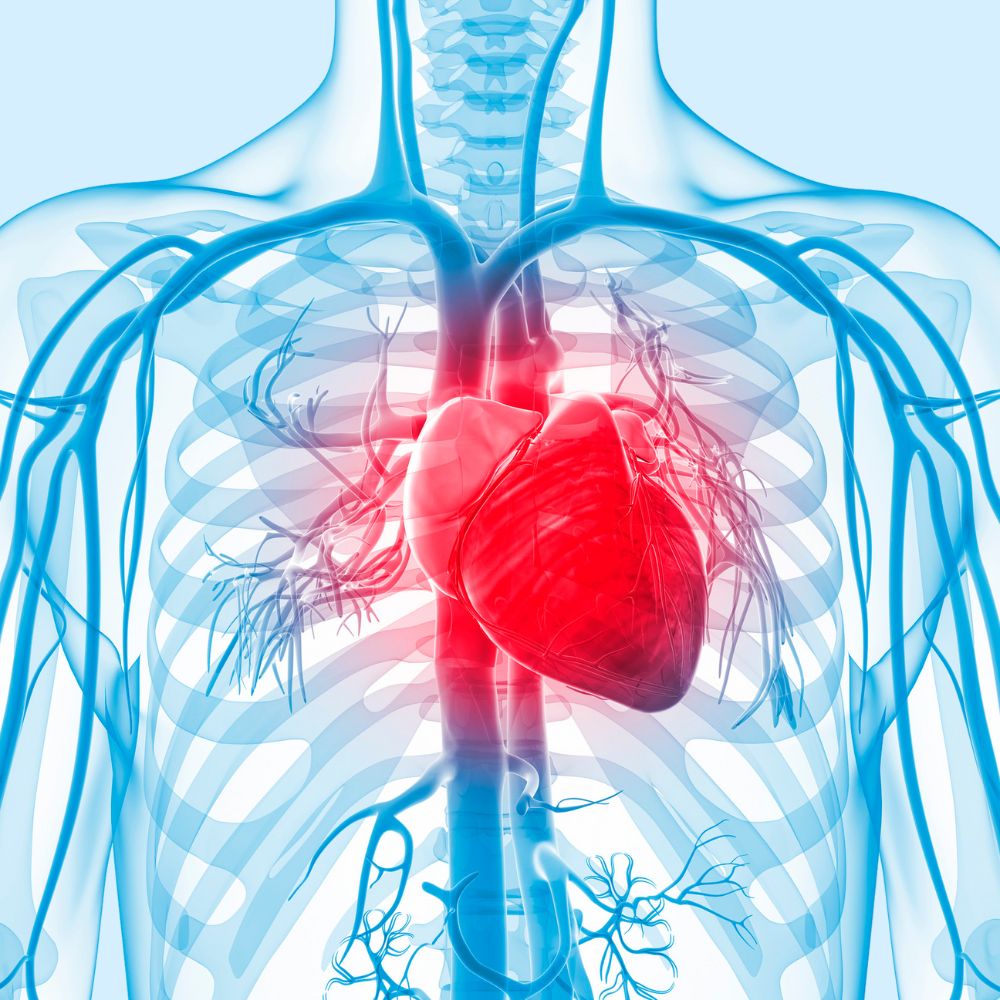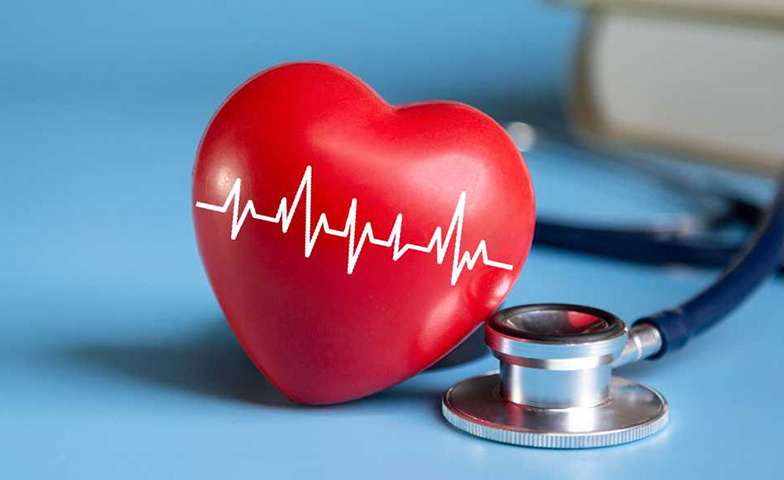Cardiology Jupiter: Facts vs fiction
Cardiology Jupiter: Facts vs fiction
Blog Article
Recognizing the Relevance of Cardiology in Modern Healthcare Services
Cardiology plays an important duty in modern healthcare, especially as cardiovascular disease continues to be the leading source of death worldwide. Advances in diagnostics and treatment have actually transformed person care, enabling earlier interventions and boosted results. Moreover, the change towards precautionary cardiology equips individuals to manage their health proactively. As innovation remains to progress, the combination of ingenious remedies might further redefine cardiology's effect on public health and wellness, triggering a better evaluation of arising patterns and their implications.
The Frequency of Heart Problem and Its Effect on Public Health
Although heart problem stays the leading cause of fatality internationally, its impact expands far beyond specific clients to affect public health and wellness systems and economic climates. The high frequency of heart illness places a substantial pressure on medical care sources, requiring boosted financing for rehab, therapy, and prevention programs. Public health and wellness efforts must deal with risk factors such as weight problems, smoking cigarettes, and sedentary way of lives, which add significantly to the climbing incidence of heart conditions.Moreover, the financial problem linked with heart problem is immense, including not only direct medical expenses however likewise indirect expenditures associated to shed performance and premature mortality. Areas encounter difficulties in handling these prices, typically causing disparities in medical care accessibility and outcomes. As the populace ages and lifestyle-related dangers proceed to intensify, the seriousness for efficient cardiology treatments becomes extremely important. Consequently, attending to heart problem is not just an issue of individual wellness but also an important public health and wellness concern.
Breakthroughs in Heart Diagnostics and Imaging Techniques
Recent developments in heart diagnostics and imaging techniques have actually reinvented the area of cardiology, improving the ability to spot and monitor cardiovascular disease. Methods such as cardiac MRI, CT angiography, and echocardiography have actually ended up being progressively sophisticated, providing thorough photos of heart frameworks and functions. These techniques enable for the early recognition of problems like coronary artery illness, cardiac arrest, and valvular disorders.Moreover, improvements in non-invasive diagnostics, such as wearable innovation and remote monitoring tools, have actually equipped clients and doctor. These devices help with real-time tracking of heart rhythms and various other essential indicators, bring about timely treatments. In addition, fabricated knowledge is being incorporated right into imaging evaluation, boosting precision and performance in medical diagnosis.
Innovations in Treatment Options for Heart Issues
Recent innovations in cardiology have resulted in substantial developments in therapy alternatives for heart disease. These include innovative surgical methods that boost procedural results and arising medications that provide brand-new methods for therapy. As the field evolves, these advancements play a crucial duty in improving individual treatment and outcomes.
Advanced Surgical Techniques
Developments in medical techniques have transformed the landscape of cardiology, using new wish for clients with heart disease. Minimally intrusive treatments, such as catheter-based interventions, have actually greatly lowered healing times and medical facility remains. Strategies like robotic-assisted surgery improve accuracy, enabling specialists to browse intricate physiological frameworks with better precision. Developments in imaging innovation assist in real-time visualization during procedures, enhancing end results. Transcatheter aortic shutoff replacement (TAVR) exemplifies an advancement in dealing with aortic constriction, making it possible for valve replacement without open-heart surgical treatment. In addition, hybrid strategies that incorporate catheter-based and surgical methods give tailored options for various cardiac issues. These innovative medical techniques not just boost individual safety and security but likewise increase treatment choices, highlighting the crucial duty of innovation in modern cardiology practices.
Arising Drugs and Therapies
As the landscape of cardiology continues to evolve, emerging medications and treatments play a crucial role in boosting therapy alternatives for heart conditions. Advancements such as unique anticoagulants and progressed lipid-lowering representatives have actually transformed the administration of heart diseases, substantially minimizing client morbidity and mortality. Furthermore, the advancement of gene therapies and regenerative medicine provides promising avenues for dealing with conditions previously regarded irreparable. Clinical trials are continually revealing the efficacy of these treatments, pressing the borders of conventional treatments. The integration of digital health and wellness modern technologies helps with individualized medication, allowing for customized treatment strategies based on genetic and lifestyle elements. Jointly, these advancements highlight the dynamic nature of cardiology, enhancing person outcomes and redefining requirements of treatment in modern health care.
The Function of Preventive Cardiology in Person Treatment
Preventive cardiology plays an important function in patient treatment by focusing on the identification of danger variables that contribute to heart illness. With way of living modification approaches and very early discovery strategies, healthcare providers can successfully lower the occurrence of cardiovascular events - Dr Garcia. This proactive technique not only enhances person results but likewise advertises long-term health and wellness
Threat Element Recognition
While heart diseases continue to be a leading source of morbidity and mortality worldwide, reliable risk element recognition acts as a foundation of preventative cardiology. Recognizing danger aspects such as hypertension, hyperlipidemia, diabetes, and household history is necessary for early treatment. Medical care experts utilize different screening approaches to assess these factors, permitting tailored safety nets. Additionally, recognizing a client's way of living options, such as smoking and physical inactivity, further educates risk evaluations. This extensive evaluation makes it possible for clinicians to create customized treatment plans focused on mitigating threats. By article prioritizing threat aspect recognition, health care systems can improve patient results and lower the overall concern of heart diseases, inevitably adding to improved public health and wellness approaches and resource allowance.
Way Of Living Modification Techniques
A wide variety of researches highlights the vital duty of way of living modification strategies in decreasing heart disease threat. These strategies include nutritional adjustments, increased physical activity, smoking cigarettes cessation, and weight monitoring. By taking on a heart-healthy diet rich in fruits, vegetables, entire grains, and lean healthy proteins, people can lower cholesterol levels and blood pressure. Routine exercise reinforces the heart and boosts overall cardio health and wellness. Furthermore, giving up smoking cigarettes significantly decreases the danger of cardiovascular disease and improves recuperation prices for those with existing conditions. Weight administration additionally adds to cardio wellness by minimizing various other risk elements such as diabetes mellitus and high blood pressure. Implementing these way of life alters not only promotes private wellness however likewise functions as a foundation of precautionary cardiology in individual care.
Early Discovery Techniques
Way of living adjustments substantially add to lowering heart disease risks, but they are most reliable when coupled with very early discovery strategies. Preventive cardiology emphasizes the relevance of identifying prospective heart problems prior to they rise into serious conditions. Strategies such as high blood pressure monitoring, cholesterol screening, and progressed imaging modern technologies like echocardiograms play vital roles in reviewing cardiovascular wellness. Biomarkers and genetic screening also improve the accuracy of early discovery, allowing for tailored preventative techniques. Routine heart risk analyses empower doctor to intervene proactively, potentially protecting against heart assaults and strokes (Cardiology Jupiter). By incorporating these very early detection techniques right into regular care, individuals can take advantage of timely way of life treatments and targeted therapies, ultimately boosting end results and enhancing lifestyle
Integrating Innovation Into Cardiology Practices
As innovations in technology proceed to improve various fields, the combination of innovative tools and systems into cardiology techniques has actually become necessary for boosting patient care and results. Telemedicine systems allow cardiologists to monitor clients remotely, enhancing accessibility to care while lowering the burden on health care facilities. Wearable gadgets, such as smartwatches, make it possible for constant heart rate monitoring, notifying both physicians and patients to potential concerns in real-time. In addition, fabricated knowledge (AI) is being made use of to examine huge quantities of cardiac data, assisting in very early medical diagnosis and individualized therapy plans. Advanced imaging techniques, including 3D echocardiography, enhance visualization of heart frameworks, bring about Discover More Here extra specific treatments. Digital wellness documents (EHRs) enhance individual details administration, making sure that cardiologists have instant access to essential information. With each other, these technical advancements are transforming cardiology, promoting proactive management and improved health outcomes for patients with cardio problems.
The Significance of Patient Education And Learning and Interaction
Client education and involvement play an essential function in the management of cardio health and wellness. By gearing up clients with knowledge concerning their problems, treatment choices, and lifestyle changes, doctor encourage individuals to take an active function in their treatment. This aggressive approach can cause boosted adherence to prescribed drugs, nutritional adjustments, and exercise regimens, eventually lowering the risk of complications.Engagement likewise cultivates a solid patient-provider relationship, encouraging open communication and depend on. When people feel informed and involved, they are much more most likely to voice problems and ask questions, which can lead to better scientific important source end results. In addition, instructional resources, such as workshops or digital platforms, can improve understanding and promote self-management methods. Overall, prioritizing patient education and interaction is essential for enhancing cardiovascular wellness, improving lifestyle, and minimizing healthcare costs related to cardiovascular illness.
Future Fads in Cardiology and Their Prospective Influence

Frequently Asked Questions
What Way Of Life Adjustments Can Minimize Heart Problem Threat?
The existing concern addresses lifestyle adjustments that can considerably decrease heart disease threat. Cardiology Jupiter. Taking on a well balanced diet regimen, engaging in regular physical task, maintaining a healthy and balanced weight, handling stress, and staying clear of tobacco can especially improve cardio health and wellness
Just How Can I Acknowledge Very Early Indications of Heart Problems?
Acknowledging very early indications of heart troubles includes surveillance signs such as upper body pain, lack of breath, fatigue, and uneven heartbeat. Prompt recognition of these signs can motivate required medical examination and intervention for much better outcomes.
What Are the Differences In Between Cardiologists and Cardiac Surgeons?
The distinctions in between cardiologists and cardiac doctors depend on their functions; cardiologists primarily identify and take care of heart conditions with non-invasive approaches, while cardiac specialists execute surgeries to deal with structural heart concerns. Each plays an important, unique duty.

Just how Usually Should I Obtain My Heart Health And Wellness Checked?
The frequency of heart checkup varies based on specific threat aspects. Normally, adults should undertake analyses every one to two years, while those with status quo might call for even more frequent analyses as suggested by medical care experts.
What Role Does Genes Play in Heart Problem Danger?
Genetics substantially affects heart problem danger, with familial patterns showing acquired conditions. Particular genetics can incline individuals to hypertension, cholesterol concerns, and various other cardiovascular troubles, highlighting the relevance of genetic screening in reviewing heart health and wellness. Heart disease stays the leading cause of death internationally, its impact extends far beyond individual people to impact public health and wellness systems and economic climates. Public health campaigns should deal with risk factors such as weight problems, cigarette smoking, and sedentary way of livings, which contribute considerably to the increasing incidence of heart conditions.Moreover, the economic burden connected with heart condition is enormous, encompassing not only direct clinical prices but likewise indirect expenses connected to shed productivity and early mortality. Preventive cardiology plays a crucial role in client care by concentrating on the recognition of threat variables that contribute to heart disease. Synthetic intelligence (AI) and maker understanding are boosting diagnostics and patient monitoring, enabling early detection of heart diseases. The differences between cardiologists and cardiac doctors exist in their duties; cardiologists largely take care of and identify heart problems with non-invasive techniques, while cardiac cosmetic surgeons perform medical procedures to fix structural heart issues.
Report this page